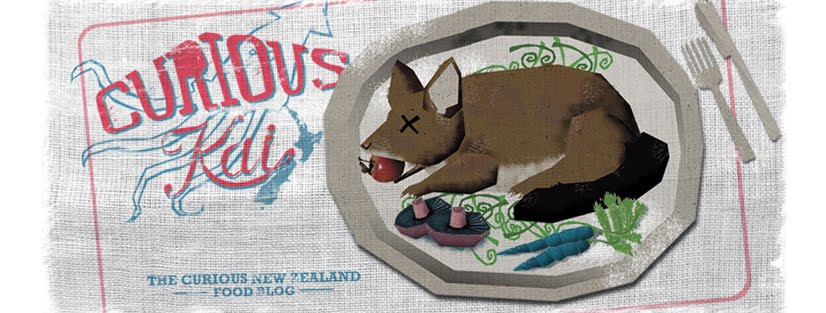Do you have so much fruit that the kids in your neighborhood have given up raiding your fruit trees and are instead honing their shoplifting skills in town? Here in Hawke's Bay, tree after tree after tree is laden with the summer's bounty. As a result, I find myself with quite a few kilos of fruit, particularly cherries, so it made sense to start preserving some of this excess goodness for later use - time to make some jam.
First, a little jam tutorial. In jam making, three elements are required: sugar, acid and pectin. Pectin is essential as it is needed for the jam to gel. It is present in the cell walls of fruit; cooking breaks down the walls, releasing the pectin. Acid, often in the form of lemon juice, aids in the extraction of pectin, as well as serving to temper flavour and stopping the sugar from crystallising after the jam's been made. Sugar's role is not only that of a sweetener but also as a preservative.
Some fruits have higher levels of pectin than others. Cherries feature low on this list, which is why we have raisins in the recipe. Combining fruit or the juices of fruits high in pectin with mid to low level fruit is a common practice, as is using commercial pectin or pectin-added sugar.
Also worth remembering is that you should use fruit that is ripe or just a tad under - pectin levels here are at their most optimum.
Todays recipe comes courtesy of "Jams, Pickles and Chutneys" by David and Rose Mabey, an amazing old British cookbook. You can always rely on the British for two things: odd scandals and brilliant jams, both usually pretty tasty. You're going to need:
- 1 kg cherries, de-stemmed
- 675 g sugar
- juice of a large lemon
- 110 g raisins
- 56 g chopped walnuts, lightly roasted
Halve the cherries, reserving the stones, and place the fruit in a large pot; sprinkle with a little of your sugar. Here, I tweaked the recipe a little: grab the stones and place inside a tea towel and bash with a hammer. Remove the little kernels from the stones, chop them up roughly and wrap up in a piece of muslin, tying to form a bag - place it in the pot. This will impart a subtle almond flavour to the jam as it cooks*.
Add lemon juice and raisins (I actually used sultanas - it's all I had in the cupboard and I'm not traipsing down to the shop just for raisins. Besides, I thought they were raisins - the perils of cooking without your glasses).
By this time, the sugar added earlier will have drawn out a little moisture from the cherries which should stop it from sticking to the bottom of the pot as it's cooked. Turn on the heat and bring to a gentle simmer; cook until the fruit is soft. Remove the bag and add the sugar, stirring to ensure it dissolves - this is vital as it will affect the jams ability to set. Once done, gently increase the heat and bring to a rolling boil.
Boil until you have achieved setting point, which is 104°c. This can be gauged by using a sugar thermometer (they're actually quite cheap, around NZ$15-20 at any kitchenwares-type store). Alternatively, pop a plate into the freezer at the very start and bring it out when you're about to begin testing. Place a teaspoon of proto-jam on the plate, leave to cool and then gently nudge it with your finger; if your finger goes through it, continue boiling. If it wrinkles, it's ready.
Whip off any scum using a spoon or ladle. Stir in your chopped walnuts and pour into warm sterilised jars; leave to cool slighly and stir to ensure that the walnuts are evenly dispersed. Cover and place somewhere cool and dark. You could eat it now but obviously the longer you leave it, the more the flavours will develop. It just occurred to me - a slug of kirsch wouldn't go amiss if you have some. Add some to the jam, too.
Voila! Cherry and walnut jam: as smooth as Don Draper's suits. Grab some cherries (or hire a small band of feral children to do it for you), and get busy before they disappear.
*There are concerns about the trace amounts of cyanide to be found in some varieties of seed and kernels, cherries included. The amounts are minuscule, and your body is quite capable of detoxifying anything you ingest, but if you are worried:
- roast the stones for 10 minutes in a pre-heated oven at 180°c
- remove stones, turning the oven down to 120°c
- extract the kernel and roast them for 10 minutes (keep an eye on it; given its size, they are prone to burning). High heat destroys the cyanide-producing enzyme
- alternatively, leave them out - the jam will taste just as good without them.













No comments:
Post a Comment